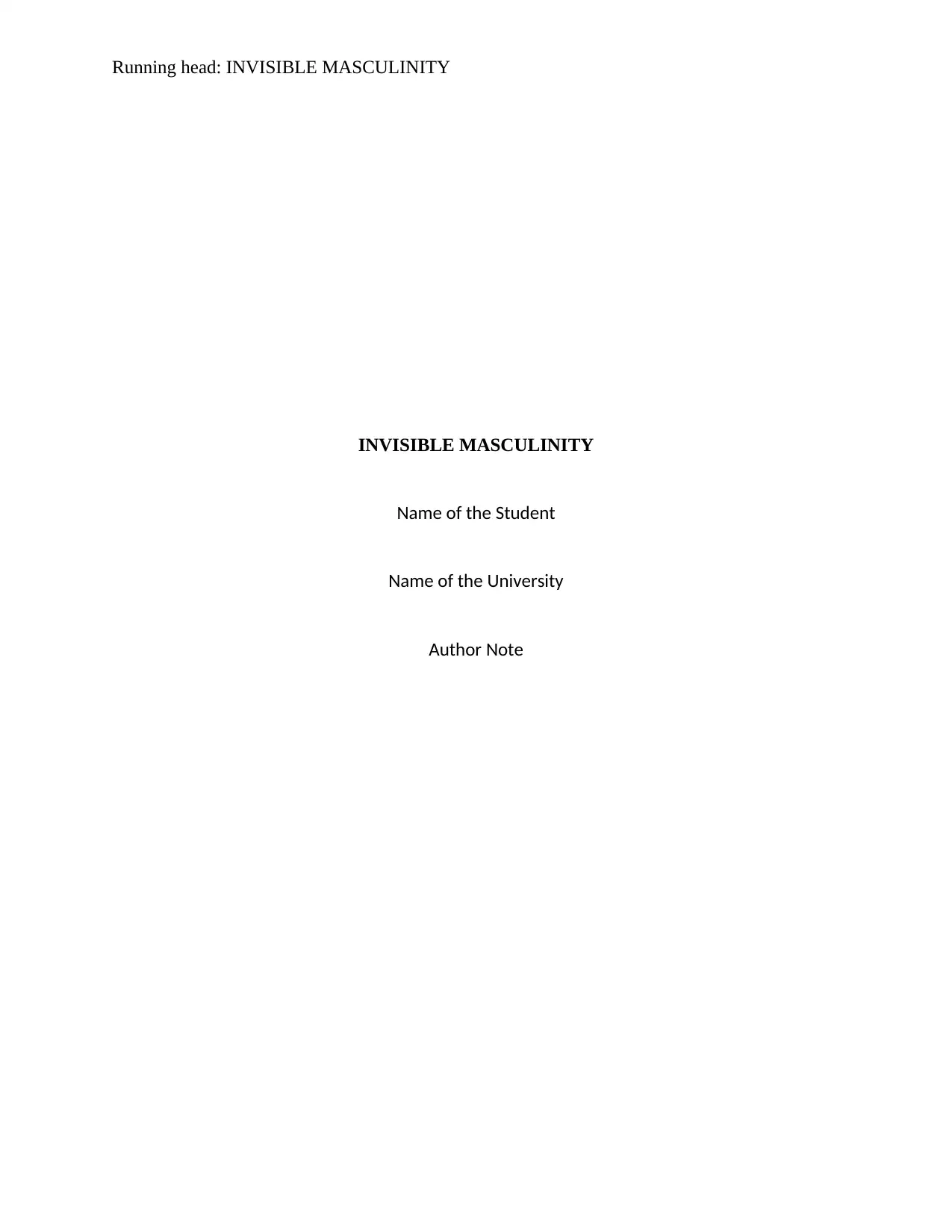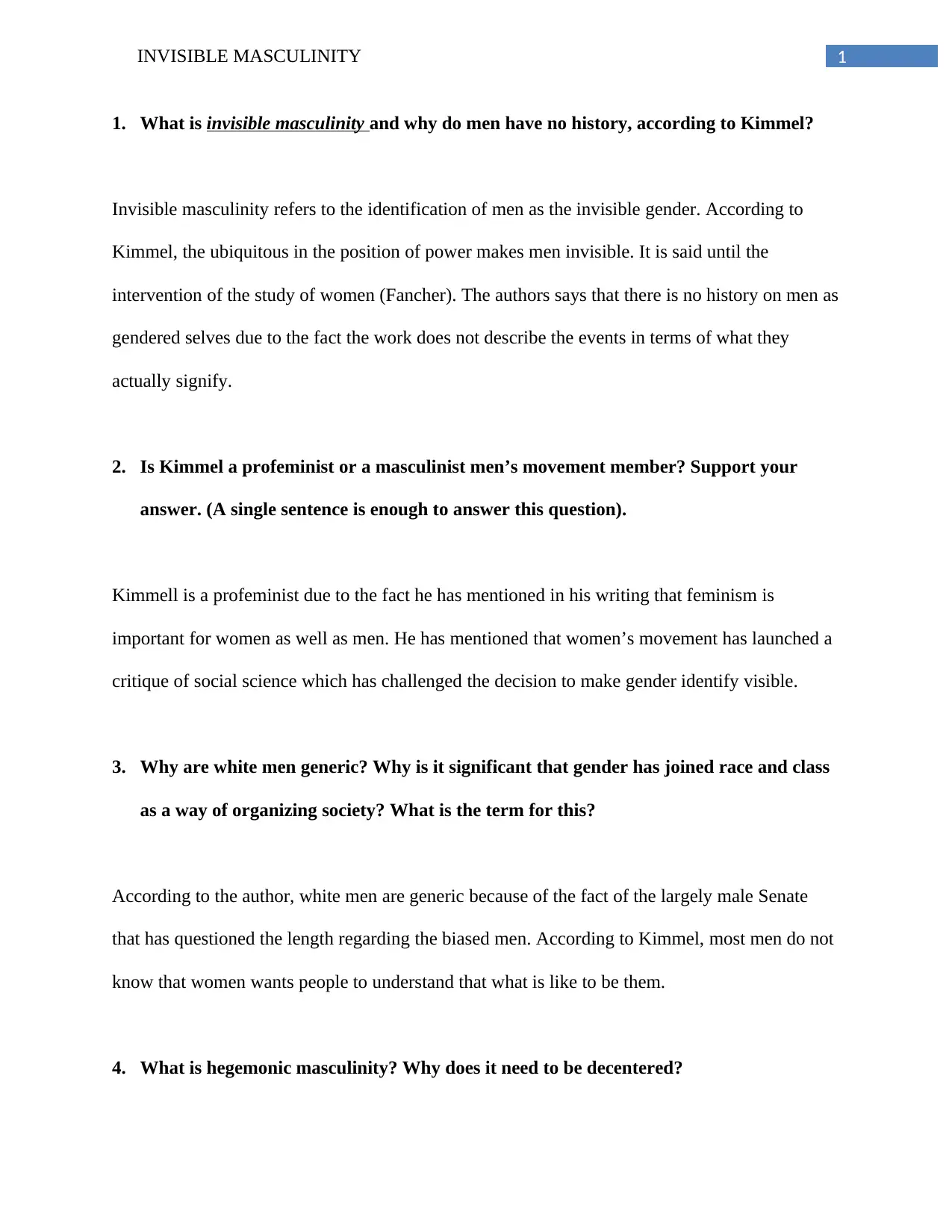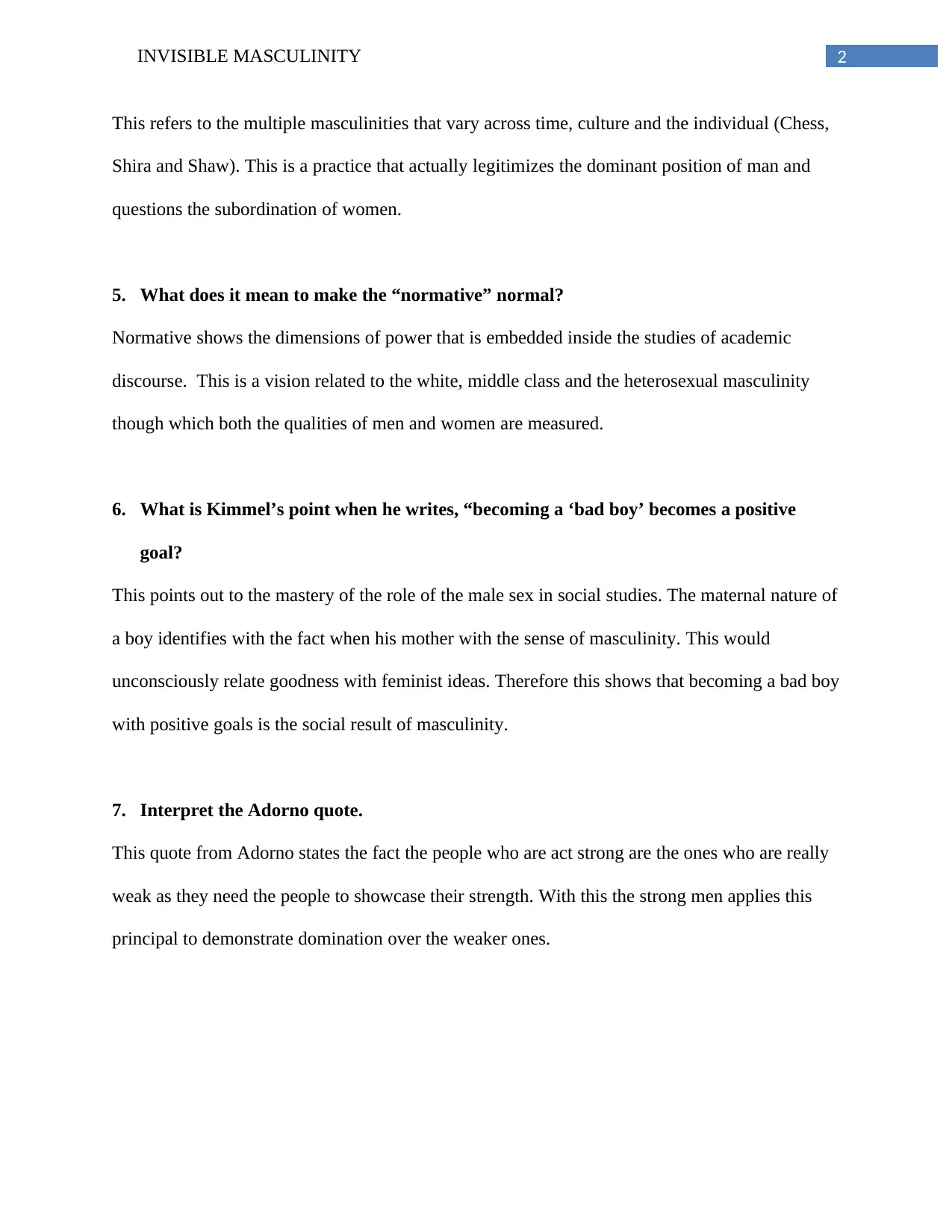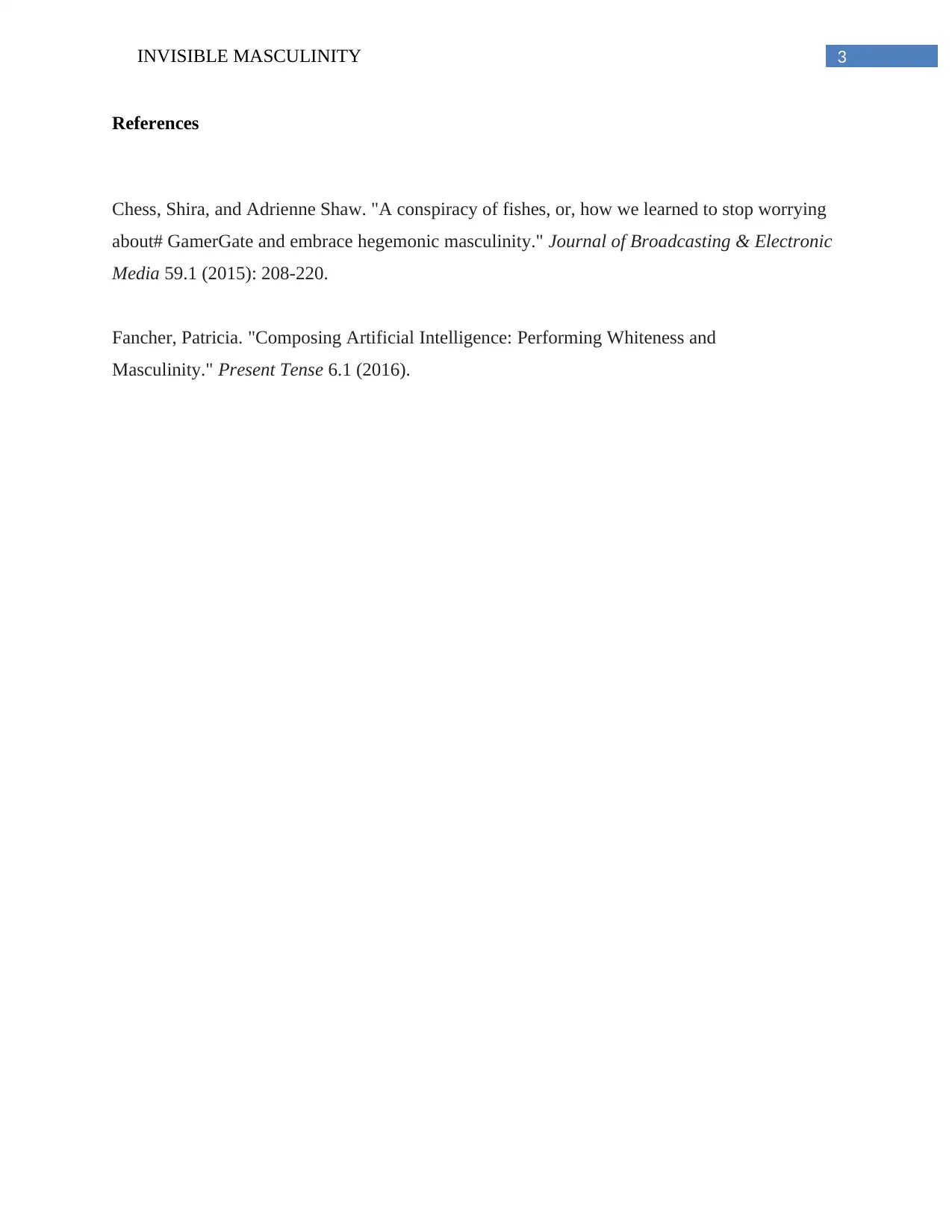Analyzing Invisible Masculinity: A Sociology Assignment
VerifiedAdded on 2023/06/03
|4
|606
|83
Homework Assignment
AI Summary
This document presents a student's responses to an assignment based on Michael Kimmel's essay "Invisible Masculinity." The assignment explores key concepts such as invisible masculinity, hegemonic masculinity, and Kimmel's perspective on men in society. The student answers questions on Kimmel's views, including whether he is a profeminist, the reasons behind the generic nature of white men, and the significance of gender's role in organizing society. The assignment also addresses the meaning of making the "normative" normal, Kimmel's point on the "bad boy" phenomenon, and an interpretation of Adorno's quote. References are also provided.
1 out of 4







![[object Object]](/_next/static/media/star-bottom.7253800d.svg)